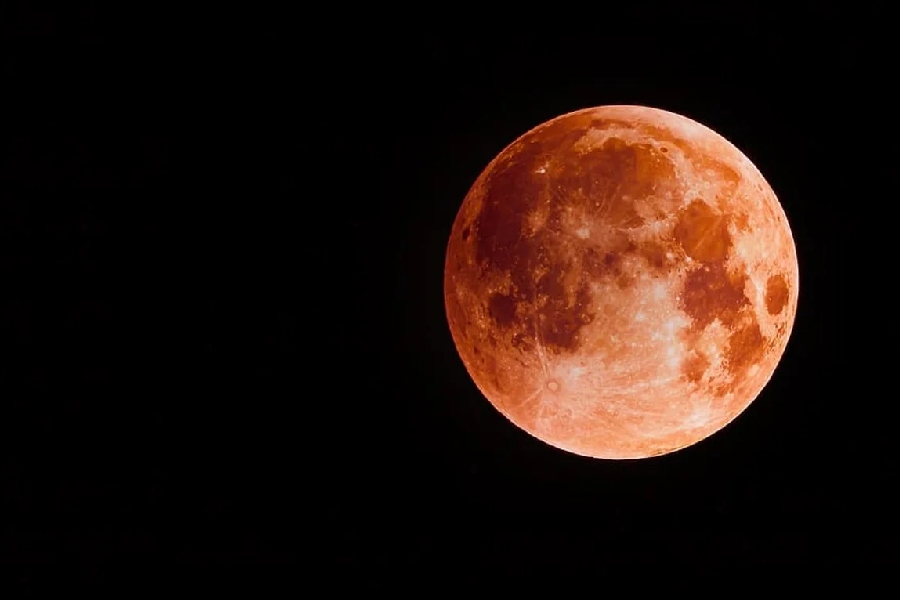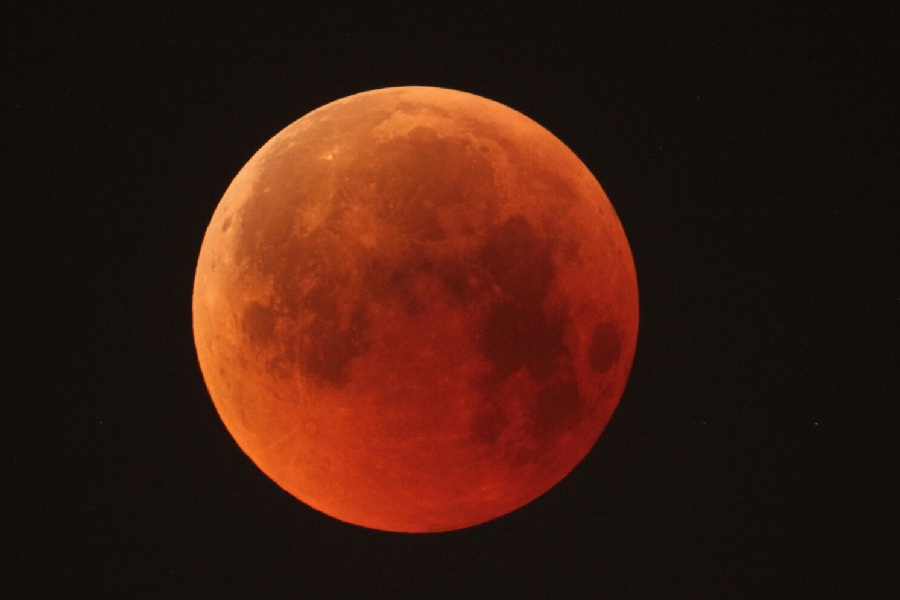Gazing up at the night sky, the Moon, our celestial companion, often captivates us with its ever-changing phases. Yet, one extraordinary event transforms the Moon into a mesmerizing spectacle – the total lunar eclipse. But what is the phase of the Moon during a total lunar eclipse?
We’ll explain how the Moon’s illumination progresses through its recognizable shapes throughout the month. Understanding these changing visible appearances paves the way to insight into eclipses. The cycle provides a background to reveal where a dramatic total lunar eclipse fits.
Join us as we cover the basics first. This will equip individuals to figure out what phase the Moon is in when sunset colors splash across its surface during a total lunar eclipse.

What Is the Phase of the Moon During a Total Lunar Eclipse?
During a total lunar eclipse, the Moon is in its full phase, fully illuminated by the Sun. However, the Earth comes between the Sun and the Moon, blocking some or all of the sunlight and temporarily causing the Moon to darken.
Despite being a full Moon, it appears dimmer and can take on a reddish hue during the eclipse. This color change occurs because the Earth’s atmosphere bends sunlight onto the Moon.
When the Sun, Earth, and Moon are perfectly aligned, the Earth’s shadow falls on the Moon, reducing its brightness even though it remains in the full phase. The reddish tint comes from sunlight indirectly reaching the Moon, filtered and refracted by atmospheric particles, giving the eclipsed Moon a colorful sunset glow.
Basics of a total lunar eclipse
A lunar eclipse occurs when the Sun, Earth, and Moon align, blocking sunlight from reaching the Moon’s surface. This alignment places Earth directly between the Sun and a full Moon. As the Moon passes through Earth’s outer penumbral and dark central umbral shadows, it temporarily dims and turns red before exiting its shadow.
The Moon then gradually returns to its usual bright white appearance, going through partial, total, and ending eclipse stages. Astronomical calculations allow accurate prediction of when total lunar eclipses will happen years in advance.
This lets skywatchers plan optimal viewing opportunities well before the next dimming and reddening event. As mentioned, it occurs during the precise alignment of the Sun, Earth, and full Moon.
Different stages of a total lunar eclipse
The different stages of a total lunar eclipse can be categorized into three distinct phases: penumbral, partial, and total.
Penumbral phase
During the penumbral phase, the Moon enters the outer region of Earth’s shadow, known as the penumbra. This initial stage induces a subtle dimming on the Moon’s surface, a phenomenon that may go unnoticed at first as the penumbra gradually covers the lunar terrain.
Partial phase
Following the penumbral phase, the celestial event progresses to the partial phase. At this juncture, the Moon moves into Earth’s darker, inner shadow, referred to as the umbra.
A visible darkening occurs on a segment of the Moon’s face as the dense umbra traverses its surface. As Earth’s central shadow increasingly envelops the Moon, a noticeable and gradual darkening unfolds.
Total phase
The final stage of a total lunar eclipse is the total phase. This phase is characterized by the Moon being fully immersed in the umbra, which completely blocks direct sunlight. Instead of a mere blackout, the moon exhibits a vivid reddening or orange hue during totality.
Interestingly, the Moon’s color during this phase can range from bright red to brown to gray, fluctuating in shade and intensity. This captivating display results from sunlight bending through Earth’s atmosphere to reach the Moon’s surface.

Reversal of Phases: Exiting Totality
As the total eclipse concludes, the Moon gradually departs from Earth’s umbra shadow. The red color diminishes while the Moon transitions back into the outer penumbral shadow. This shift happens slowly, with the initial bright red hue transforming into brown and then gray tones as the Moon exits the umbra.
In stages, the Moon brightens as more light reflects upon it. The process of leaving totality spans over an hour until the Moon regains its normal full Moon brightness. Retracing its path in reverse, the Moon follows the same trajectory out as it did entering.
Initially exiting the umbra, progressing through the partial eclipse stage, and returning to the subtle penumbral shadow, the Moon fully emerges from Earth’s shadow. Viewers witness the <Moon reflecting sunlight entirely once again, marking the conclusion of the eclipse and its return to a regular full Moon.
Sun – Earth – Moon Relationships During an Eclipse
As discussed, a total lunar eclipse occurs when the Sun, Earth, and Moon align in syzygy, forming a straight line. This celestial event happens during a full Moon when the Earth is positioned directly between the Sun and the Moon.
The Earth’s shadow consists of two parts: the umbra, where the Sun is completely blocked, and the penumbra, a lighter outer region. In a total lunar eclipse, the Moon passes through the Earth’s umbra, resulting in a captivating phenomenon where the Moon takes on a reddish hue, commonly known as a “blood moon.”
This alignment and the passage of the Moon through the Earth’s shadow create the conditions for a breathtaking astronomical display. Lunar eclipses are not rare, occurring a few times each year, but visibility depends on one’s location on Earth.
Observers within the path of totality witness the Moon fully immersed in the Earth’s shadow, while others experience a partial or penumbral lunar eclipse. The dance of the Sun, Earth, and Moon during a total lunar eclipse offers a remarkable spectacle of celestial dynamics.
Sunlight and wavelengths
The Moon appears bright because it reflects sunlight. Without sunlight, we wouldn’t see the moon. During an eclipse, Earth obstructs direct sunlight, causing the Moon to take on a reddish hue.
Sunlight is a mix of all visible light wavelengths. Normally, the Moon reflects this full spectrum, appearing bright white. However, during an eclipse, Earth’s atmosphere filters sunlight, allowing mainly red and orange wavelengths to reach the Moon in its shadow.
When direct white sunlight is blocked during an eclipse, the Moon loses its usual range of wavelengths and shines white under normal lighting. Only indirect red and orange wavelengths make their way through our atmosphere to illuminate the Moon.
As a result, only red and orange colors are visible on the Moon during totality. This change in illumination creates striking red hues during an eclipse. Once the eclipse concludes, the full spectrum of sunlight bathes the Moon again, restoring its normal bright white appearance.
Conclusion
What is the phase of the moon during a total lunar eclipse? It allows us to grasp the precise celestial alignments that make such dazzling unveilings of a blood moon possible.
As the blood Moon slowly emerges from Earth’s shadow, observers are encouraged to remember the lunar phase they saw when the Moon was hidden earlier. Now, they can understand the precise movements that caused the Moon to disappear completely and then gradually reappear from Earth’s darkness.
Understanding the Moon’s changing phases during a lunar eclipse allows observers to marvel more deeply at the celestial dance the next time it happens. When Earth’s shadow casts across the lunar face, painting it shades of red, they can appreciate the captivating sight and comprehend the elegant science that makes such celestial magic possible.
